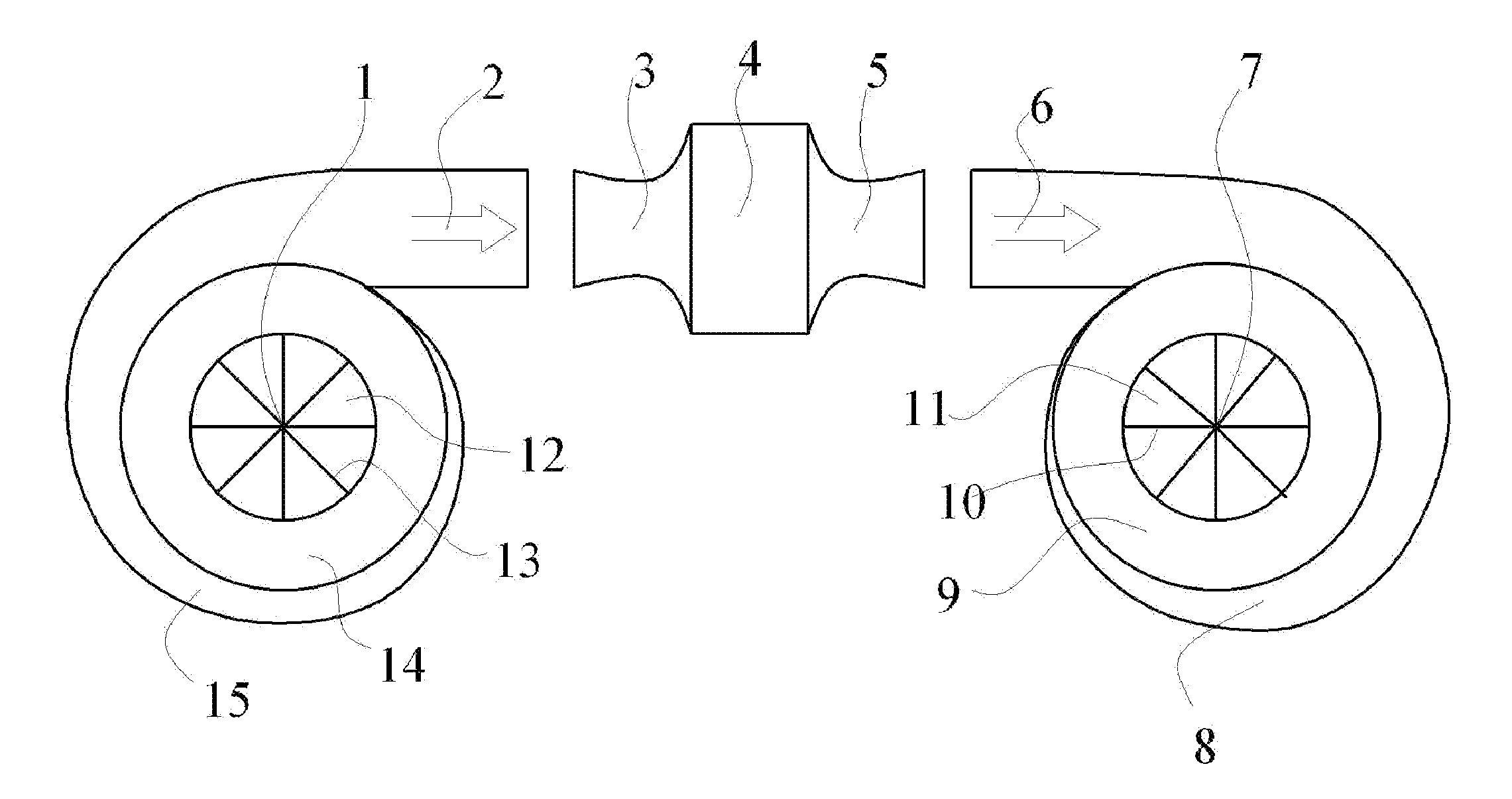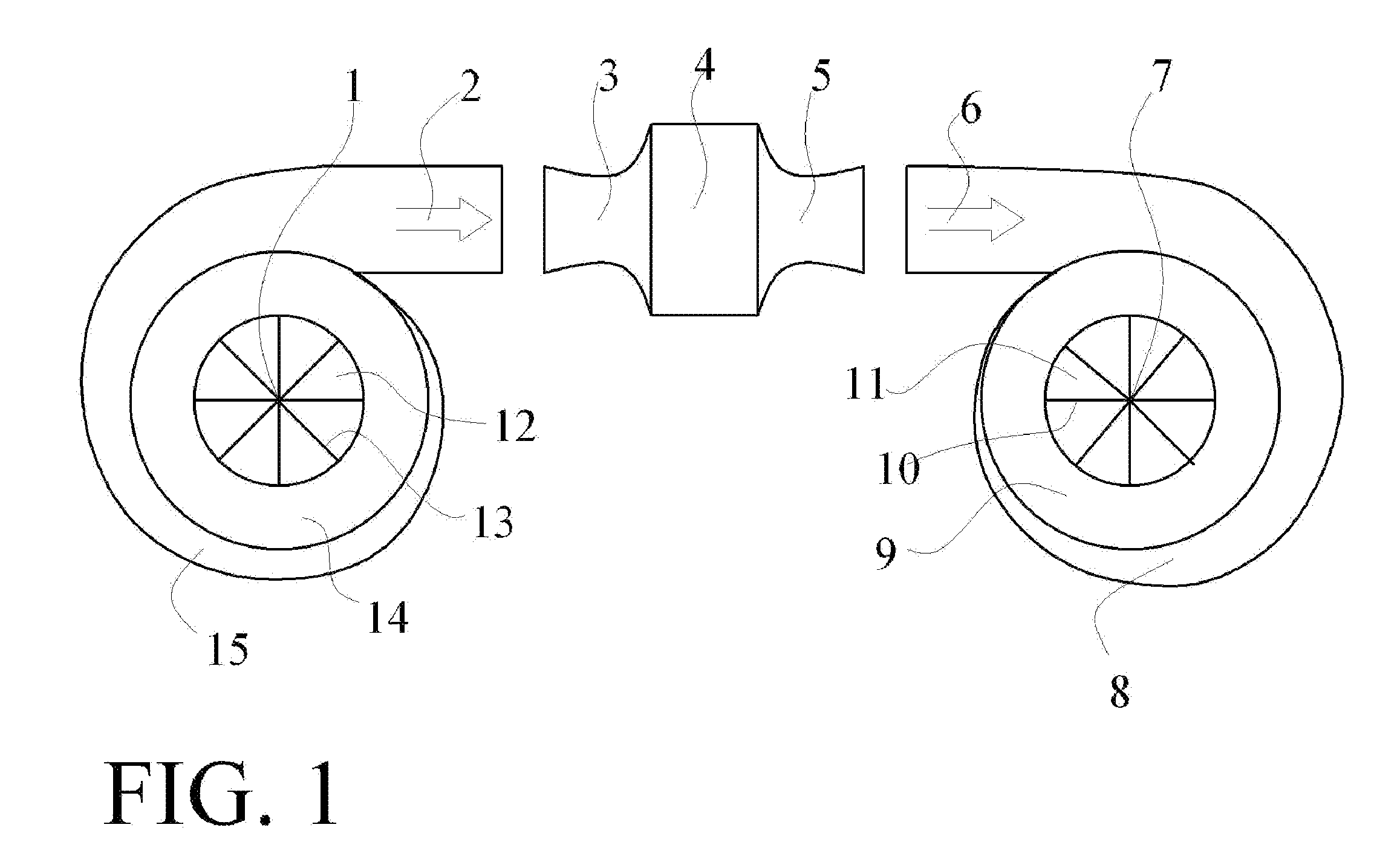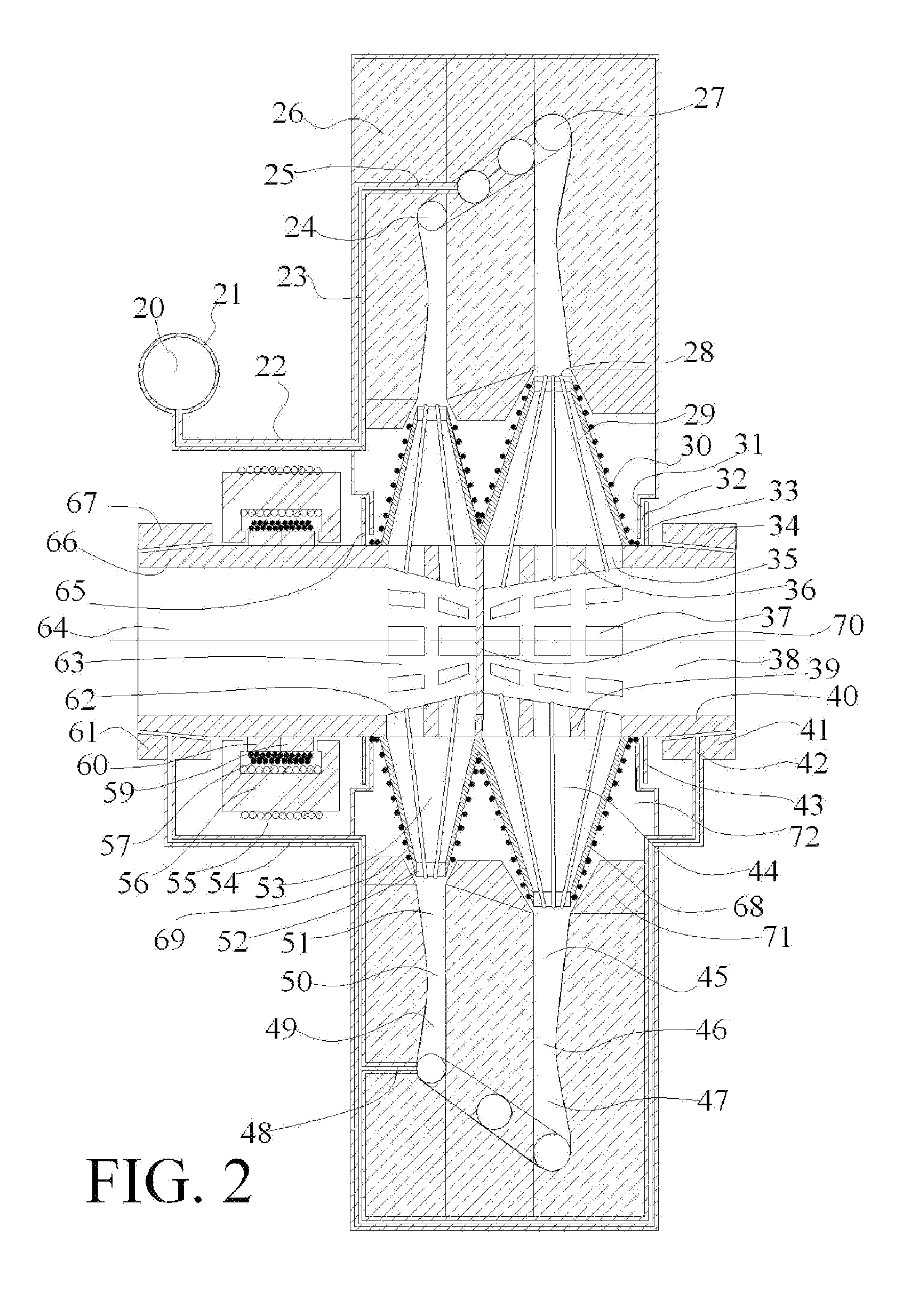Subsonic and stationary ramjet engines
a ramjet and subsonic technology, applied in the field of power plants, can solve the problems of consuming a great deal of fuel by flying supersonically, ramjets have virtually no commercial applications, and generate shockwaves and shockwaves. waste energy, waste energy, etc., to achieve high efficiency, eliminate wasteful drag, and high energy flow
- Summary
- Abstract
- Description
- Claims
- Application Information
AI Technical Summary
Benefits of technology
Problems solved by technology
Method used
Image
Examples
Embodiment Construction
[0024]Reference will now be made in detail to various exemplary embodiments of the invention. The following detailed description is presented for the purpose of describing certain embodiments in detail and is, thus, not to be considered as limiting the invention to the embodiments described. Rather, the true scope of the invention is defined by the claims.
[0025]Temperatures herein are generally expressed in absolute degrees Kelvin, sometimes in degrees Centigrade, and room temperature is approximately 294 K. Atmospheric air or gas is air or gas at ambient pressure and temperature. If atmospheric temperature is T0 K, and that air or gas is adiabatically changed to have a stagnation temperature of Ts K by some means, this result is referred to herein as “high energy” air or gas if the stagnation temperature Ts K is 3 times T0 K or higher. High energy air / gas has a specific energy approximately Ts / T0 times the specific energy of the air / gas at atmospheric conditions of temperature and ...
PUM
 Login to View More
Login to View More Abstract
Description
Claims
Application Information
 Login to View More
Login to View More - R&D
- Intellectual Property
- Life Sciences
- Materials
- Tech Scout
- Unparalleled Data Quality
- Higher Quality Content
- 60% Fewer Hallucinations
Browse by: Latest US Patents, China's latest patents, Technical Efficacy Thesaurus, Application Domain, Technology Topic, Popular Technical Reports.
© 2025 PatSnap. All rights reserved.Legal|Privacy policy|Modern Slavery Act Transparency Statement|Sitemap|About US| Contact US: help@patsnap.com



